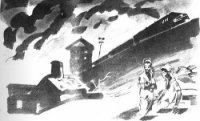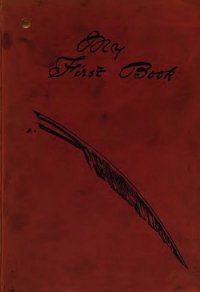Operation Nemesis: The Assassination Plot that Avenged the Armenian Genocide - Bogosian Eric (мир книг .txt) 📗
Bound by the shackles of guilt and hatred, Tehlirian found himself both energized and disgusted by his daydreams. He was a prisoner of destiny. He now believed he could travel no other path than the one that led directly toward a confrontation with Talat. He loved Anahid, he loved life itself, but all his passions faded before his one overweening obsession: revenge. Disciplined by his budget and his self-appointed role as Talat’s executioner, he ate little and led the life of a monk. He rarely socialized, and when he did, he avoided discussion of the massacres. He preferred to live in isolation, with but one thought in mind: his target.
It was during this period that a brief glimmer of optimism appeared for the Armenians. In January 1920, the Allied Supreme Council, the British command tasked with coordinating war efforts, formally recognized the new Democratic Republic of Armenia. Though no borders had been set, it now seemed possible that Armenia could achieve a foothold in eastern Anatolia. A few months later, at the Allied conference in San Remo, a division of territories was postulated. The Arabs would get Mesopotamia. A “Kurdistan” would be established for the Kurds. The Aegean would go to the Greeks. By August 1920, the Treaty of Sevres had been finalized. This agreement proposed ceding major territory to the Armenians and the Greeks while making Constantinople (Istanbul) an international zone. Had such a plan gone into effect, there would have been little left of the Ottoman Empire but a fraction of its former self.
In late summer 1920, Tehlirian learned that Danielian was trying to find him. An intermediary instructed him to pick up a letter at the Armenian delegation in Paris. According to Jacques Derogy: “It was a letter from the secretary of the Tashnag Central Committee in Boston, Hamo Paraghamian, a member of the editorial team of Hairenik, the party’s paper in America: ‘Your ticket for New York will be collected by Mr. Hanemian, who has received instructions from Armen Garo for the financing of your trip.’ ”13 No other details were given. Tehlirian understood that he was being ordered to head to Boston and assumed that the trip had something to do with Talat. But why was he being asked to travel to the United States? Was “the monster” there? What Tehlirian couldn’t know was that because of his success in dispatching Megerdichian, he had been nominated by Danielian to spearhead the “Special Mission.”
Tehlirian was being summoned to Boston not only to be recruited as the Berlin assassin but also to be vetted as to his presentability to the public. A key element in Garo and Natali’s plan would be the intentional surrender by the assassin in Berlin, followed by a well-publicized trial. This trial would offer a unique opportunity for the Armenians to make their case—to present the facts of the genocide and decry the lack of justice—before the eyes of the world. Shahan Natali, the coordinator of the team, explained in an article published in 1964 that when Tehlirian received his final instruction, he was clear:
Understand, dear Soghomon, why Berlin has been chosen first, [because this is] where the Armenian-murdering criminals have taken refuge.
And why no matter if it is day or night, in the street or in a store, whether he is alone or before the eyes of the police, you will explode the skull of the number one nation-murderer. You will stay at your place with your foot on the dead body and you will surrender to the policemen who come, who arrest you.
And in the Berlin court you will become the prosecutor also against Germany in the name of our millions of victims.
Only in this way will the judgment be fully just.14
With that plan in mind, Garo had to make certain that the future representative of the Armenian people would cut a sympathetic figure. He had to meet Tehlirian face-to-face.
Though Tehlirian had neither the necessary paperwork nor the funds to pay for his trip to the United States, within a few days his contact at the delegation arranged a fresh passport with visa attached and a third-class steamship ticket to New York City (costing about a hundred dollars). He would enter the United States as an ordinary southern European immigrant, one among the thousands who were arriving weekly. Departing from Cherbourg on August 19, Tehlirian crossed the Atlantic to New York in seven days aboard the Olympic, the “twin sister” of the ill-fated Titanic. (The Olympic had been part of the massive rescue effort eight years earlier.) Like the Titanic, it was a huge ship, fitted out as a troop carrier in 1915 and now totally refurbished as one of a new class of luxury liners servicing the burgeoning traffic between the continents.
Tehlirian’s travel arrangements were modest but not spartan. The White Star Line’s third class was equivalent to second class on most other lines. The cabin he shared with three other immigrants was supplied with bunks, electric lighting, and a washbasin. One bath down the hall was sufficient for all the men in steerage, as most avoided bathing. (A common belief at the time was that taking baths resulted in lung disease.) Meals were simple but nourishing, with typical menus including oatmeal, coffee, canned herring, boiled beef and cabbage, biscuits, and canned peaches.
For the first time in his life, Tehlirian experienced the vastness of the ocean. Losing sight of land and gazing out at the rolling Atlantic for hours at a stretch gave him time to think deeply on the difficult mission before him. He lost himself in his meditations and, unlike his fellow passengers, was neither fascinated by the massive ship nor bored by the long voyage. The transatlantic crossing was merely prelude; his adventure would begin only after the ship docked. After waiting patiently for two years, Tehlirian was finally moving forward.
As the ship steamed into port, the twenty-four-year-old stared in wonder at the skyscrapers towering over New York Harbor. This was neither frantic Paris nor crumbling Constantinople. This was the city of the future, of new beginnings. This was where he would find a new beginning. According to Ellis Island records, Tehlirian entered the United States on August 25, 1920, as “Solomon Telarian” and used his shaky command of the French language to report his ethnicity as Armenian with a residence in Paris.
After processing through immigration and a short ferry ride across the Hudson, Tehlirian hailed a taxi and handed the driver a slip of paper on which was written the address of the New York Tashnag “clubhouse,” 53 Lexington Avenue at Twenty-fifth Street, just south of the Armory. As he traversed Manhattan, he marveled at the energy of the city “bubbling like a furnace everywhere.”15 Inside the club, fellow countrymen surrounded him and peppered him with queries in the mother tongue. Tehlirian tried at first to satisfy the interest of his peers, then found the enthusiastic curiosity repellent. He grew silent. Soghomon could not bear casual discussion of what Armenians were now calling Medz Yeghern (the Great Crime).
Tired and angry, Tehlirian made a move to leave. One of the older boys collared him and asked him what he was upset about. Frustrated, he blurted out that he was on a mission under the direction of the Tashnagtsutiun, that he didn’t have time for gossip. The mood in the room shifted. The young men surrounding him finally understood: this skinny war veteran was not just one more newcomer to America, peripherally associated with the Tashnag organization, but a genuine fedayee who was part of something deeper and much darker. He was quickly escorted to the recently refurbished Grand Central Station, where he caught a train to Boston.
Tashnag operatives picked up the fiery young man at Boston’s South Station and drove him to the editorial offices of the Hairenik newspaper. The newspaper’s offices, like those in Geneva and Constantinople, provided a safe haven for revolutionaries. Newspapers factored greatly in the dissemination of radical ideas and provided a natural cover for those who organized the intellectual superstructure of revolution. All over the world, newspapers had become the first real mass media. They were cheap to print and circulate, and could target specific ethnic minorities, consolidating their agenda. Newspapers created a sense of unity for factions, political parties, and revolutionaries.




